February 12, 2015 | Posted in TRADITIONAL ART AND PAINTING | By sockii
Visiting Napoli? Do not miss these masterpieces by Caravaggio.
The legacy and triumph of the Italian artist Michelangelo Merisi o Amerighi da Caravaggio–known most commonly as simply Caravaggio—has become increasingly recognized in recent times. More and more art historians, as well as casual lovers of classical art, are realizing the importance he played in shaping Baroque movement and bringing intense realism, passion, violence and humanity to his depictions of religious figures and biblical scenes.
Those visiting the historic city of Naples in Italy have the chance to view three tremendous works by Caravaggio, and none of them are to be missed. Each of these is in a different location in the city: one in an art museum, one in a church, and one in a palazzo gallery. Therefore it can take a little planning to make sure you don’t miss any of these works, but it is well worth the effort if you have the chance. Reproductions in a book or on a website just can’t do them justice.
Who was Caravaggio?
Videos discussing the artist, his life, and his works
Caravaggio’s life was full of drama, violence and death—much like the memorable artwork he produced. These videos will give you a great introduction to what made him so unique, and why his artwork had such an impact and influence on many.
Caravaggio in Naples: The Artwork
“The Seven Works of Mercy” (1607)
Caravaggio’s large canvas celebrating human mercy and kindness
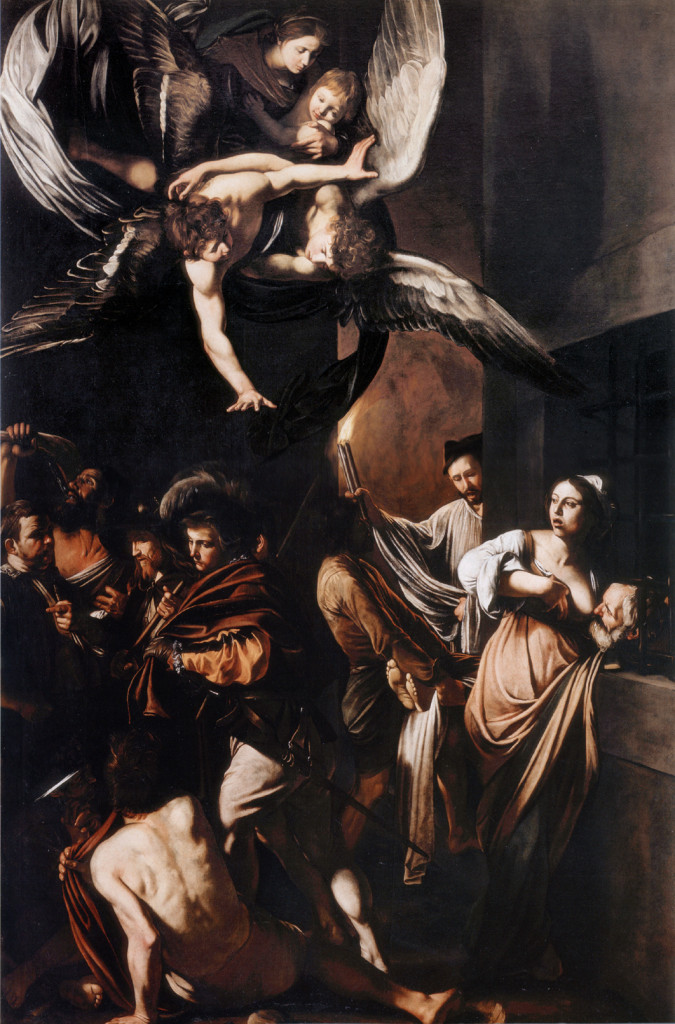
“Sette opere di Misericordia” (Seven Works of Mercy) by Caravaggio
Source: Wikipedia, public domain.
This large, rather busy painting is still on display in the church for which it was created, Pio Monte della Misericordia in Naples. The church was commissioned by a charitable brotherhood that met weekly to tend to the sick at the Hospital for Incurables.
Originally, there was to be seven separate panels, each one focusing on one of the merciful works: bury the dead, feed the hungry, visit the imprisoned, shelter the homeless, clothe the naked, visit the sick, refresh the thirsty. But instead Caravaggio combined all seven works into the one composition, with the angel overhead transmitting the grace to humanity that compels them to be merciful. The painting can be startling and confusing at first to look upon, but it’s a work worth studying closely to take in all the detail and realism Caravaggio brings to the subject. It is also a painting that seems right at home still today in the busy, gritty streets of Napoli.
Pio Monte della Misericordia is located at Via dei Tribunali, 253, in the heart of Naples’ historic center. Closed on Wednesdays, it is open otherwise from 9am – 2pm (there is a ticket fee). Be sure not just to visit the church but the onsite museum where you can get a unique overview of the painting from the first floor coreto (little choir).
You can learn more about visiting at their official website.
“The Flagellation of Christ” (1607)
One of two Caravaggio paintings on this subject painted in Naples
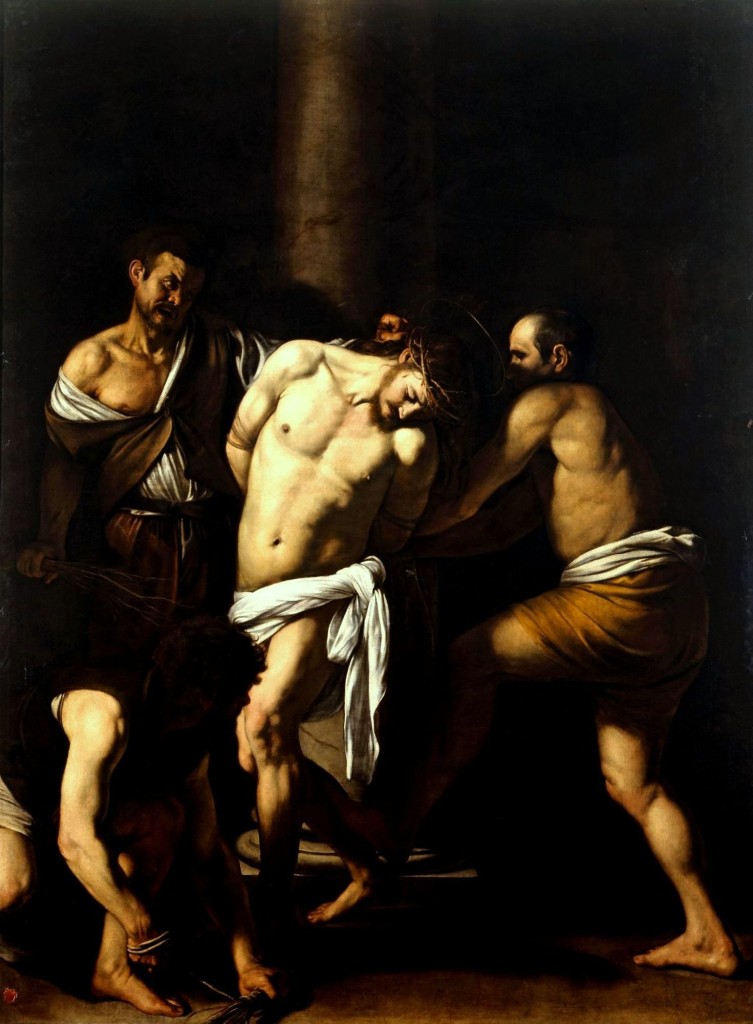
“La Flagellazione di Cristo”. Source: Wikipedia – Public Domain
This moving, emotion-filled work was commissioned by the de Franchis family of Naples, who were associated with the Pio Monte confraternity discussed above. It was painted for their family chapel in the church of San Domenico Maggiore, but since 1972 it has been on display in the Capodimonte National Museum of Naples instead. It is one of two paintings of the Flagellation which Caravaggio completed while in Naples; the second, Christ at the Column, is now housed at the Muse des Beaux-Arts de Rouen in France.
This dark, moving painting has been described as representing the flagellation as a kind of “sadistic ballet”. As Antonella Bianco explains, it also deeply reflects the tense mood and atmosphere of Naples in the 17th century:
“A place where social hardship and poverty were dyed with a new colour, the colour of urban violence that was already known to the government, who by that time was trying to answer the disquiet of common people.”
The Capodimonte National Museum is well worth visiting not just for this work by Caravaggio but for its incredible (perhaps incomparable) collection of Neapolitan art. It is a very large museum that can easily take hours to explore, so don’t miss out on the opportunity. This painting is located at the end of a long corridor, displayed alone in a small room where its immense size and power overwhelms the viewer. The museum is open daily except for Wednesdays, from 8:30am – 7:30pm, and there is an admission fee. I especially recommend visiting in the late afternoon/early evening when the museum is especially quiet, perfect for appreciating the magnificent art.
“The Martyrdom of Saint Ursula” (1610)
Caravaggio’s last known painting
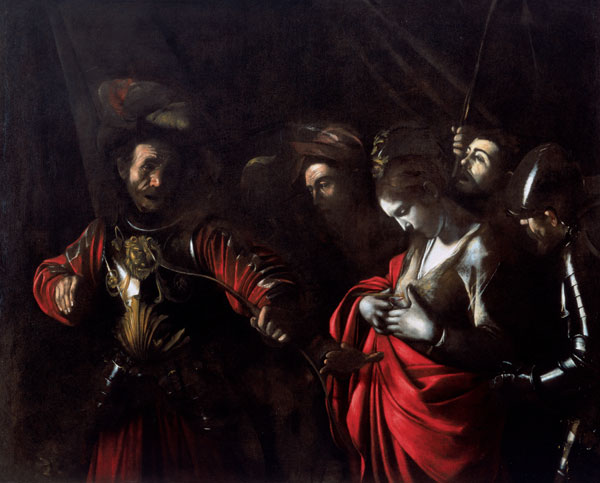
“The Martyrdom of Saint Ursula”. Source: Wikipedia, public domain.
This somber, haunting painting is believed to be Caravaggio’s last work, before his death in the year of its creation, 1610. It was completed for Marcantonio Doria, a young nobleman from Genoa who had become an avid collector of Caravaggio’s paintings. He asked for it to be completed to mark his stepdaughter’s entry into a religious order, where she would take the name of Sister Ursula.
The story of Saint Ursula follows that she was captured by the Huns while on a pilgrimage, along with the eleven thousand virgins who were with her. The other women were all killed while Ursula was spared by the King of the Huns, who was drawn to her beauty and wished for her to marry him. She refused and for her defiance, the King killed her with an arrow. Here, she appears ghostly pale, and the arrow itself seems almost just like a translucent shadow on the surface of the canvas. It seems uncertain if this was by intent by Caravaggio, or a result of damage and difficult restoration work which the painting has been through.
It was painted during the artist’s second stay in Naples, and after he had been attacked by four armed men and possibly suffered partial loss of vision (or at least facial disfigurement). Caravaggio’s final years were plagued with difficulty: he had first fled to Naples in exile from Rome after killing a young man, then gone to Malta seeking pardon. But in Malta as well he got into trouble, was imprisoned, only to escape and flee to Sicily. It was in Naples he completed this final work, before setting sail for Rome where he hoped to finally receive pardon. Alas, he died under mysterious circumstances before his arrival. Fever, disease, lead poisoning, or murder? We will likely never know for sure…
The Martyrdom of Saint Ursula is now part of the Intesa Sanpaolo Collection and on display in the Gallery of Palazzo Zevallos Stigliano at Via Toledo, 185—the heart of Naples busy shopping district. The gallery also houses a small collection of interesting works by other Neapolitan artists, although Caravaggio’s painting is clearly the highlight of the collection. You can visit it Tuesday through Sunday, from 10am until 6pm (Saturdays until 8pm), and there is a small ticket fee.
Learn more about Caravaggio
Recommended DVDs, Books and Travel Guides
CHECK PRICECaravaggio
This excellent made-for-Italian-tv miniseries is a great introduction to the artist and his tumultuous life. Subtitled in English, you will find yourself drawn into the story quickly as it follows Caravaggio from the age of six, when his home village is struck by the plague, to his tragic death at the early age of 38. After watching this, you’ll surely feel eager to learn more. CHECK PRICECaravaggio: The Complete Works
“Completists” will surely want this volume, which includes incredibly high-quality, detailed reproductions of all of the artists’ paintings. As so much attention has been newly placed on the artist in recent times, the book presents a reassessment of Caravaggio’s art and its lasting legacy and importance. CHECK PRICECaravaggio: A Life Sacred and Profane
This biography of the artist’s life sets out to separate fact from fiction in presenting a new look at Caravaggio’s life and work. Carefully researched yet still quite readable, it will give even a longtime “fan” of the artist a new appreciation and understanding of the man and the times in which he lived. CHECK PRICELet’s Trail Caravaggio
Planning a trip to Italy some time soon, and love the work of Caravaggio? Then you might want to get a copy of this guide (available in paperback and Kindle editions). It will lead you along Caravaggio’s “trail” through Rome, Naples, Sicily and Malta, so that you don’t miss a thing and see the places where the artist left his mark.
Related posts at Spacial Anomaly
Table of Contents
sockii
sockii is just your typical Jane-of-All-Trades who never has enough time in her day for all of her projects. She has written for many websites online including Squidoo, Zujava, Yahoo! Contributors Network, HubPages and Wizzley. She has been attending and vending at science fiction and media conventions for over 15 years, and for several years ran an art gallery and jewelry store in Philadelphia. Today she is happy to be living in South Jersey with her partner David and their 6 cats. Sockii is a member of several affiliate sales programs including Amazon Associates and Viglink. Products from these services may be advertised on her posts and pages to generate sales commissions.
Leave a Reply
*
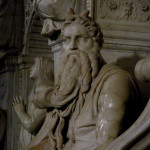
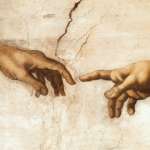
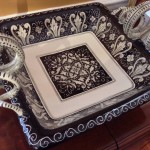
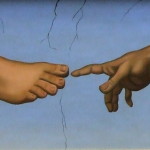








Be the first to comment.